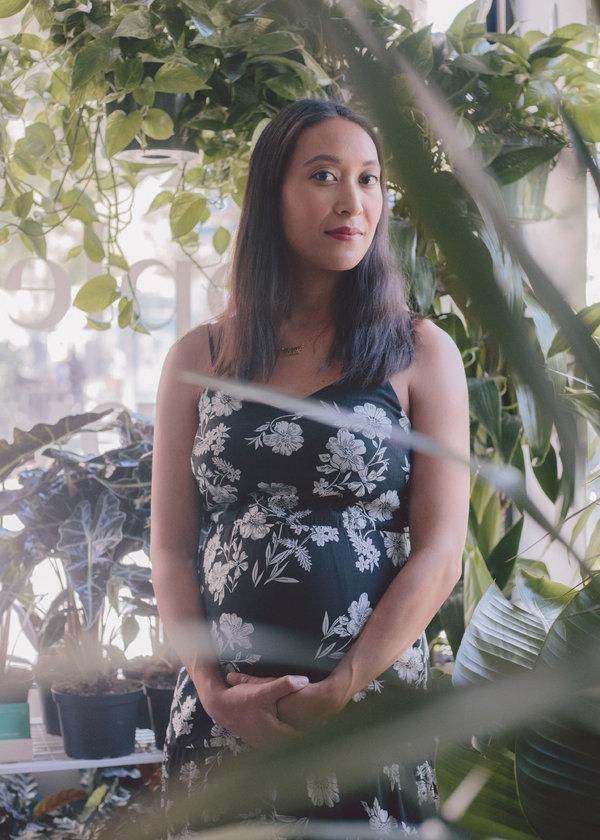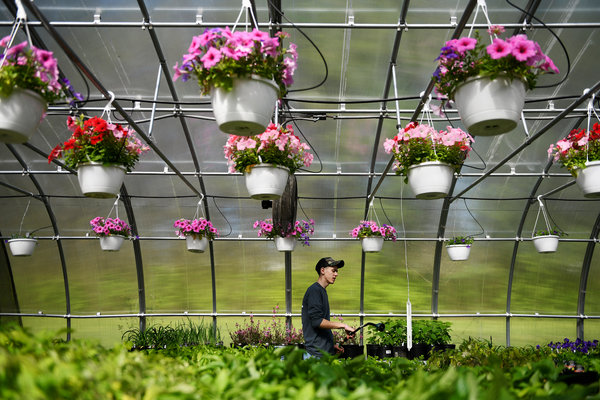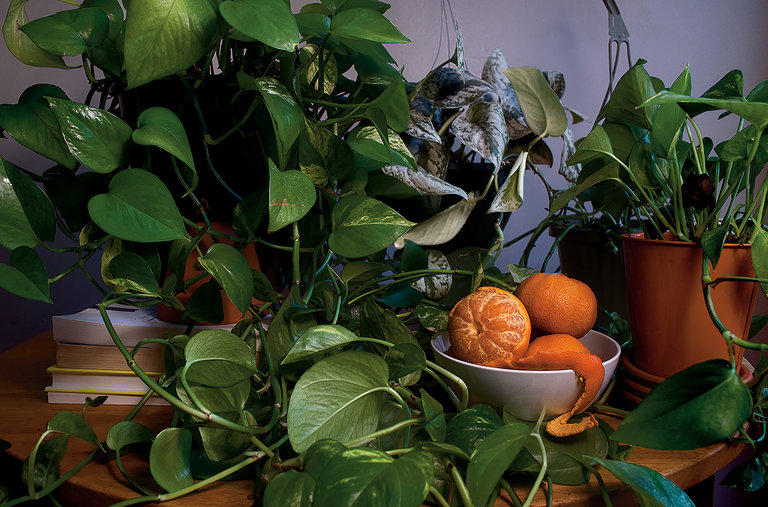Horticulture and red wine were served up the other night at the Sill, a boutique on Hester Street, as Christopher Satch, a botanist wearing a T-shirt that read, “Plants Make People Happy,” the company motto, led a workshop on carnivorous plants.
It was plant stand-up — slightly blue patter with quick takes on Linnaeus and Darwin; binomial nomenclature (note the shape of the Venus fly trap for cues to how it got its name); detailed care instructions (carnivorous plants evolved in acidic bogs, which means they need distilled water, not tap, and lots of it); and a show-and-tell of Mr. Satch’s collection of butterworts and sundews.
Among the rapt attendees were Madison Steinberg and Lindsay Reisman, both 23 and working in public relations, and Brayan Poma, also 23, who works in construction; afterward they each took home an attractive tropical pitcher plant. “I like plants, but I kill so many of them,” said Mr. Poma, who wore a green hoodie and a goatee. “Maybe that’s why I find them so alluring.”
Mr. Poma is not the only millennial to feel that allure. Buoyed by Instagram, his generation’s obsession with houseplants is growing faster and more tenaciously than English ivy. Plant influencers, the horticultural stars of that medium, now have book deals, sponsors and hundreds of thousands of followers.
Their apartment living rooms are the new urban jungles, spilling over with philodendrons, pilea (this year’s “It” plant) and bird’s nest ferns. Plant parents, as they call themselves, fuss over their plant babies with the attention once given to kimchi or coffee connoisseurship. (Such anthropomorphism — ironic though it may be — recalls the 1970s, when “The Secret Life of Plants” proposed plant sentience based on dubious science and convinced New Agers to chat up their spider ferns.)
Unlike George Orwell, these houseplant lovers see the lowly aspidistra as an aspirational totem, not a bourgeois cliché, and post money shots of their monsteras on #monsteramonday. That hashtag was propagated in 2016 by Morgan Doane, a director of analytics for an art company in Florida.
The same year, Ms. Doane, 37, bonded with another plant enthusiast over Instagram: Erin Harding, 39, a blogger and social media marketer who lives in Oregon. The two started sending each other plant cuttings in the mail.
Their joint account, Houseplantclub, is now an Instagram sensation, with over 450,000 followers and regular entreaties from corporate suitors — makers of cactus watches, succulent jewelry and macramé pot hangers, among others — to feature their wares. Late last month, they published their first book, “How to Raise a Plant and Make It Love You Back.”
That’s not to be confused with “How to Make a Plant Love You: Cultivating Your Personal Green Space,” out next year, by Summer Rayne Oakes, a 34-year-old activist, nature blogger and fashion model with degrees in environmental science and entomology who lives with some 700 plants in her Brooklyn apartment.
Ms. Oakes may be the original plant influencer: In 2012, the makers of the Toyota Prius designed the subcompact Prius C with Ms. Oakes in mind (the company described her as an “active eco-optimist”) and created a paint color in her name.
Boyswithplants, with over 95,000 followers, offers a different sort of inspiration, found in beefcake photos of young men (some of whom also happen to be influencers, botanical and otherwise) posing with their plants. The account will migrate from Instagram into a book of the same name, out from Chronicle Books next spring.
Last year, nearly a quarter of houseplant sales were made by those between the ages of 18 and 34, according to Gardenresearch.com. Plant industry marketers, like Garden Media, call them the Indoor Generation, noting they are overwhelmingly renters in urban areas with little or no access to yards, and deeply aware of the physical and mental benefits of living with plants (cleaner air, for example).

Eliza Blank has conceived The Sill as a plant lifestyle company, or a global plant brand — a Glossier of plants.CreditNathan Bajar for The New York Times
This appetite is why the Sill is not simply a cheeky, curated plant boutique — with locations on the Lower East Side and the Upper West Side — selling moss balls (adorable algae pods that resemble damp, emerald green Tribbles), fiddle-leaf figs and a startling number of miniature succulents (over 100,000 this year). Its founder, Eliza Blank, a 33-year-old former brand strategist who started the business six years ago in her Lower East Side apartment with a $12,000 Kickstarter campaign, has conceived the Sill as a plant lifestyle company, or a global plant brand — a Glossier of plants, she said.
This past summer, the company’s revenues reached $5 million. Seventy percent of its sales are online purchases, though Ms. Blank’s ambitions include more bricks-and-mortar; two additional stores will open in Los Angeles in late January.
The Sill sells stylish ceramic planters in millennial colors (mint green and pale pink); watering cans; misters with upbeat messages; fertilizer and soil mixes; totes and T-shirts; and hosts community building events like movie nights and “sip and shop” cocktail parties. An ambassador program encourages “brand evangelists” to host their own. It is Ms. Blank’s aim to reinvent the garden center — and your local horticultural society.
Her timing has been fortuitous. In 2012, when Ms. Blank began selling plants out of her apartment, Pinterest and Instagram were just two years old. People were looking to their social media feeds, rather than shelter magazines, for inspiration on home décor. Design blogs like Justina Blakeney’s Thejungalow, now with over one million followers, were fomenting a 1970s style revival, making indoor jungles of textiles, wicker and a riot of hanging plants, cactuses and snake ferns.
Bohemian biophiliacs ensured that houseplants were on “the cool apartment checklist,” said Abbye Churchill, an author of “A Wilder Life: A Season-by-Season Guide to Getting in Touch With Nature,” a Whole Earth Catalog for millennials.
“A succulent goes along with your Eames chair and your Group Partner ceramics vase,” Ms. Churchill said, referring to the clay torsos made by a Brooklyn-based artist that have been enjoying a long pop cultural moment. But a houseplant also confers upon its owner “a more authentic form of existence,” she said. “You can have this robust urban lifestyle — maybe there is only mayonnaise in your fridge — but because you have a plant, that indicates you have a modicum of ability to care for something.”
It is also important to note “how well a glossy green houseplant goes with millennial pink,” as Ingrid Abramovitch, the features director of Elle Decor said.
If plants are “an affordable way to fill the void,” as Ms. Blakeney, the designer behind Thejungalow put it recently, the Sill’s ambition is to be the go-to source. But it has competition.
A couple of years ago, three friends practiced a form of extreme horticulture in their apartment in the Williamsburg section of Brooklyn, kitting it out with plants instead of furniture. At its peak, there were 500 plants in there, said Ryan Lee, now 29, who has worked in finance and technology. He and his roommates, Jonathan Wu, a software engineer, and Kay Kim, a former creative director at an ad agency, both 27, held plant pop-up sales — their friends nicknamed them the Plantboys — and refined the idea for what Mr. Lee, echoing Ms. Blank, calls a modern plant company.
Their store, Rooted, opened in May in a warehouse building in Greenpoint; it, too, is an e-commerce platform, archly branded with dude-friendly vernacular (the care instructions for a bird’s nest fern note that it’s low maintenance: “A ten day surf trip to Bali is still in the cards”) and stocked with minimalist planters in tough-looking pressed clay and concrete fiber.
The Plantboys also plan to sell branded gear like apparel and gardening products. “We want to be the pre-eminent green brand,” Mr. Lee said, adding that Patagonia is an inspiration. “We want to create a company our generation will trust that we can leverage to enact positive change for the environment.”
That’s basically the manifesto of Tula House, another new houseplant company in Brooklyn, started by Christan Summers, 34, and Ivan Martinez, 38, both of whom are escapees from the advertising business. For the past few years, the couple has been selling plants from a truck they retrofitted and parked in front of design and arts centers, like the Invisible Dog in Boerum Hill.
Last summer they were parked in SoHo in front of Patagonia, offering plant care demonstrations, seasonal collections of pottery by local artists and T-shirts and postcards with “environmental-action-oriented tasks,” Ms. Summers said.
“We started scrappy,” she said. But the business has been successful enough that next week, they, too, are opening a storefront in a Greenpoint warehouse, to offer “carefully curated” desert, tropical and subtropical plants, along with ceramics, clothing, books and space for workshops and events.
“We want to get people thinking beyond #monsteramonday and where is my monstera and I want it now,” Ms. Summers said. “Plants aren’t made in a factory. We want people to recognize where they come from.”
If Martha Stewart was the domestic and horticultural avatar of the previous generation, the new plant purveyors offer a corrective to that costly abundance — an ideal that fetishized an English trowel or leather gardening gloves — and a counter to humorless, daunting expertise.
Courtney Almeida, a manager at Homecoming, a plant boutique and cafe in Brooklyn, spends a lot of time soothing customers panicked by the odd brown leaf on their pilea. “I tell them, ‘It’s nature, it’s real,’” Ms. Almeida said. “Let ’em go. It’s a bigger metaphor for life.”
When the Sill started in 2012, Ms. Blank pointed out, Williams & Sonoma had just introduced its Agrarian line of high-end gardening products, including an $880 chicken coop. “It seemed like that was the only way to connect with plants,” she said. “We’re offering something more bite-sized and inviting.”
Consider the moss balls, otherwise known as filamentous green algae — or pond scum. They grow in icy lakes, Ms. Blank said, which makes them a natural fit for apartment dwellers. (Two furry balls and a goldfish bowl cost $25.)
“They can be cold and alone in the dark,” Ms. Blank said. “All you have to do is change the water every once in a while. Now we’re talking about self-care. People want to interact with something that’s not technical. They come to the store and say, ‘I’ve killed a plant.’ We say, ‘It’s O.K., we’ve all been there.’ We have a saying: ‘It’s O.K. if the only thing you did today was survive.’ This is an entire generation that feels inadequate. Nobody wants another thing they’re not going to be good at.”
“We all have dreams of the big house in the country,” she added, “but right now we’re living in a basement on the Lower East Side and how do we connect to nature there? I think my generation just wants to be happy.”









